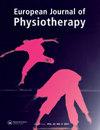An investigation of the measurement properties of the physiotherapy therapeutic relationship measure in patients with musculoskeletal conditions
IF 1.1
Q3 REHABILITATION
引用次数: 1
Abstract
Abstract Purpose The therapeutic relationship between a patient and physiotherapist has been associated with improved physiotherapy outcomes. However, there is no agreed upon measure of therapeutic relationship in physiotherapy. This paper describes a validation study of a new patient-reported measure, the Physiotherapy Therapeutic Relationship Measure (P-TREM). Methods In this multi-site validation study, participants with musculoskeletal conditions (n = 163) completed a survey containing the P-TREM, demographic questions, a Trust in Healthcare Providers scale, and a therapeutic relationship global rating for construct validation. We investigated item quality, internal structure using exploratory factor analysis (EFA), unidimensionality, internal consistency, and construct validity. We eliminated poor performing items to optimise the length of the P-TREM. Results The final version of the P-TREM has 30 items. EFA suggests two domains: ‘Physiotherapist role’ and ‘Patient role’, correlation between factors was 0.71. Internal consistency was excellent. We found a low-moderate correlation between P-TREM scores and Trust in Healthcare Providers and a strong correlation between P-TREM scores and the therapeutic relationship global rating, confirming our hypotheses for convergent and concurrent validity. Conclusions The P-TREM can be considered for use in clinical research to understand therapeutic relationship in the care of people with longstanding musculoskeletal conditions in outpatient, in-person settings.肌肉骨骼疾病患者物理治疗关系测量特性的研究
摘要目的患者和物理治疗师之间的治疗关系与物理治疗结果的改善有关。然而,物理疗法中的治疗关系并没有达成一致的衡量标准。本文描述了一项新的患者报告测量方法——物理疗法-治疗关系测量(P-TREM)的验证研究。方法在这项多站点验证研究中,患有肌肉骨骼疾病(n = 163)完成了一项调查,其中包括P-TREM、人口统计学问题、对医疗保健提供者的信任量表和用于结构验证的治疗关系全球评级。我们使用探索性因素分析(EFA)对项目质量、内部结构、单维度、内部一致性和结构有效性进行了调查。我们消除了性能较差的项目,以优化P-TREM的长度。结果P-TREM的最终版本有30个项目。EFA提出了两个领域:“物理治疗师角色”和“患者角色”,各因素之间的相关性为0.71。内部一致性非常好。我们发现P-TREM评分与对医疗保健提供者的信任之间存在中低相关性,P-TREM得分与治疗关系全球评级之间存在强相关性,证实了我们的收敛性和并发有效性假设。结论P-TREM可用于临床研究,以了解门诊和面对面环境中长期肌肉骨骼疾病患者的治疗关系。
本文章由计算机程序翻译,如有差异,请以英文原文为准。
求助全文
约1分钟内获得全文
求助全文

 求助内容:
求助内容: 应助结果提醒方式:
应助结果提醒方式:


